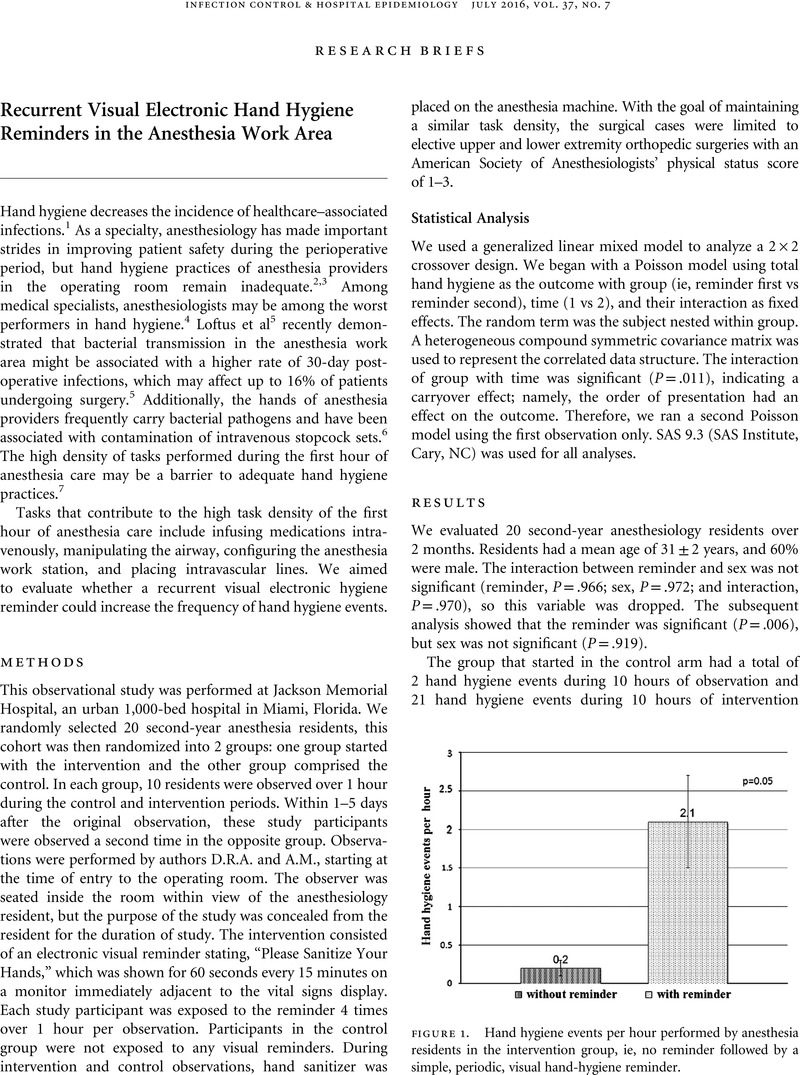Crossref Citations
This article has been cited by the following publications. This list is generated based on data provided by Crossref.
Shojania, Kaveh G
Jennings, Alison
Ramsay, Craig R
Grimshaw, Jeremy M
Kwan, Janice L
and
Lo, Lisha
2009.
The effects of on-screen, point of care computer reminders on processes and outcomes of care.
Cochrane Database of Systematic Reviews,
Vol. 2021,
Issue. 6,
Mahmutoglu, Derya
and
Munoz-Price, Luisa Silvia
2018.
Infection Prevention.
p.
29.
Munoz-Price, L. Silvia
Bowdle, Andrew
Johnston, B. Lynn
Bearman, Gonzalo
Camins, Bernard C.
Dellinger, E. Patchen
Geisz-Everson, Marjorie A.
Holzmann-Pazgal, Galit
Murthy, Rekha
Pegues, David
Prielipp, Richard C.
Rubin, Zachary A.
Schaffzin, Joshua
Yokoe, Deborah
and
Birnbach, David J.
2019.
Infection prevention in the operating room anesthesia work area.
Infection Control & Hospital Epidemiology,
Vol. 40,
Issue. 1,
p.
1.
IWASHITA, Yoshiaki
2021.
Infection Control in Postoperative Intensive Care.
THE JOURNAL OF JAPAN SOCIETY FOR CLINICAL ANESTHESIA,
Vol. 41,
Issue. 7,
p.
604.
Jelacic, Srdjan
and
Bowdle, Andrew
2022.
Infection Prevention.
p.
31.
Schnetzinger, Maximilian
Assadian, Ojan
Markstaller, Klaus
and
Klein, Klaus Ulrich
2023.
Infektionsprävention im OP: praxisorientierte Empfehlungen für AnästhesistInnen.
Die Anaesthesiologie,
Vol. 72,
Issue. 2,
p.
121.





